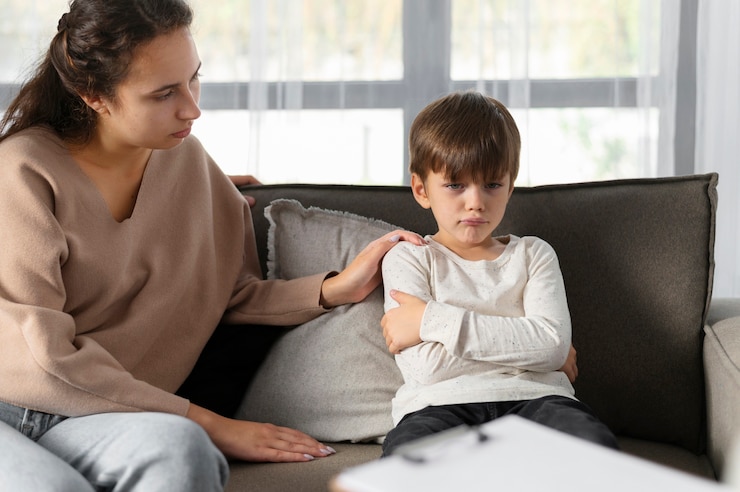
#### Inside: Discover practical strategies to help an angry child develop emotional regulation skills, paving the way for a calmer home environment.
**Table of Contents**
**Yelling. Stomping. Slamming. Crashing.**
Raising a child with intense emotions and limited coping skills can lead to a whirlwind of unpredictability and family chaos. It’s not unusual for parents to visit my therapy office feeling frustrated, exhausted, and at a loss for handling ongoing negative behaviors.
“It seems like there’s never more than five minutes of peace in our home. My child can’t get along with his sister, and his outbursts leave everyone on edge. I’ve tried everything from taking things away to timeouts, but nothing seems to work!”
So, what’s the best way to help an angry child manage their anger?
Loud noises and disruptive behaviors stir our subconscious emotions, often disrupting how we envision our parenting journey.
### The Key to Navigating Emotional Challenges
How do you survive the chaos of raising a highly emotional child and still be the strong parent they need? Begin by looking inward.
When I suggest parents reflect on their own feelings during their child’s meltdowns, it isn’t always well-received. Our culture often emphasizes focusing outward on the child and their behaviors. While understanding your child’s actions is beneficial, the quickest path to peace is by first getting a handle on your own emotions.
Regardless of your child’s temperament, as a parent, you set the tone for your family’s environment. Sensitive children are keenly aware of your energy and mirror your behaviors. Don’t worry—while learning to manage your emotions takes time, there are some simple questions to guide your journey.
**Related Reading >> 7 Best Anger Management Activities for Kids**
1. Reflect on your reactions when your child is struggling.
Children with intense emotions experience many highs and lows. As they grow, they need you to be their emotional anchor. By modeling calmness, confidence, and resolve, you teach them about emotional regulation.
Your subconscious emotions are often triggered by past experiences or internalized beliefs, such as:
– “I need to stop this now or I’m allowing bad behavior.”
– “My child needs to control himself!”
– “People will think I’m a bad parent if my child has a tantrum.”
– “If she acts like this, she’ll never have friends!”
Separating your narrative from your child’s helps you address their underlying needs while staying emotionally neutral and supportive. Planning ahead for stressful situations increases your chances of remaining composed when needed.
Ideas to try:
Remember, being human means you won’t always win against stress hormones and an overactive amygdala. Negativity won’t help you be the strong, steady parent your child needs. Practice self-compassion and learn to repair and connect with your child.
**Related >> 25 Mindfulness Activities to Calm Your Kid Quickly**
After a few weeks of reflection and planning, parents often return feeling empowered and confident. They realize that helping an angry child starts with looking inward and taking responsibility for their own actions rather than solely trying to control their child.
Focus first on yourself to foster peace in your home. As Mahatma Gandhi famously said, “Start changing yourself if you want to change the world around you.”
### Equip Your Child with Vital Life Skills
Join 30,000 other intentional parents who receive the Parents with Confidence weekly email. Sign up for a FREE 5-day parenting course where you’ll learn:
– How to protect your child’s self-esteem
– The true path to gaining your child’s cooperation
– The most valuable skill for their future
– Ways to discipline without causing emotional harm
**JOIN NOW + SEND MY ECOURSE!**
We respect your privacy and promise not to send spam. Unsubscribe anytime. Built with Kit.



